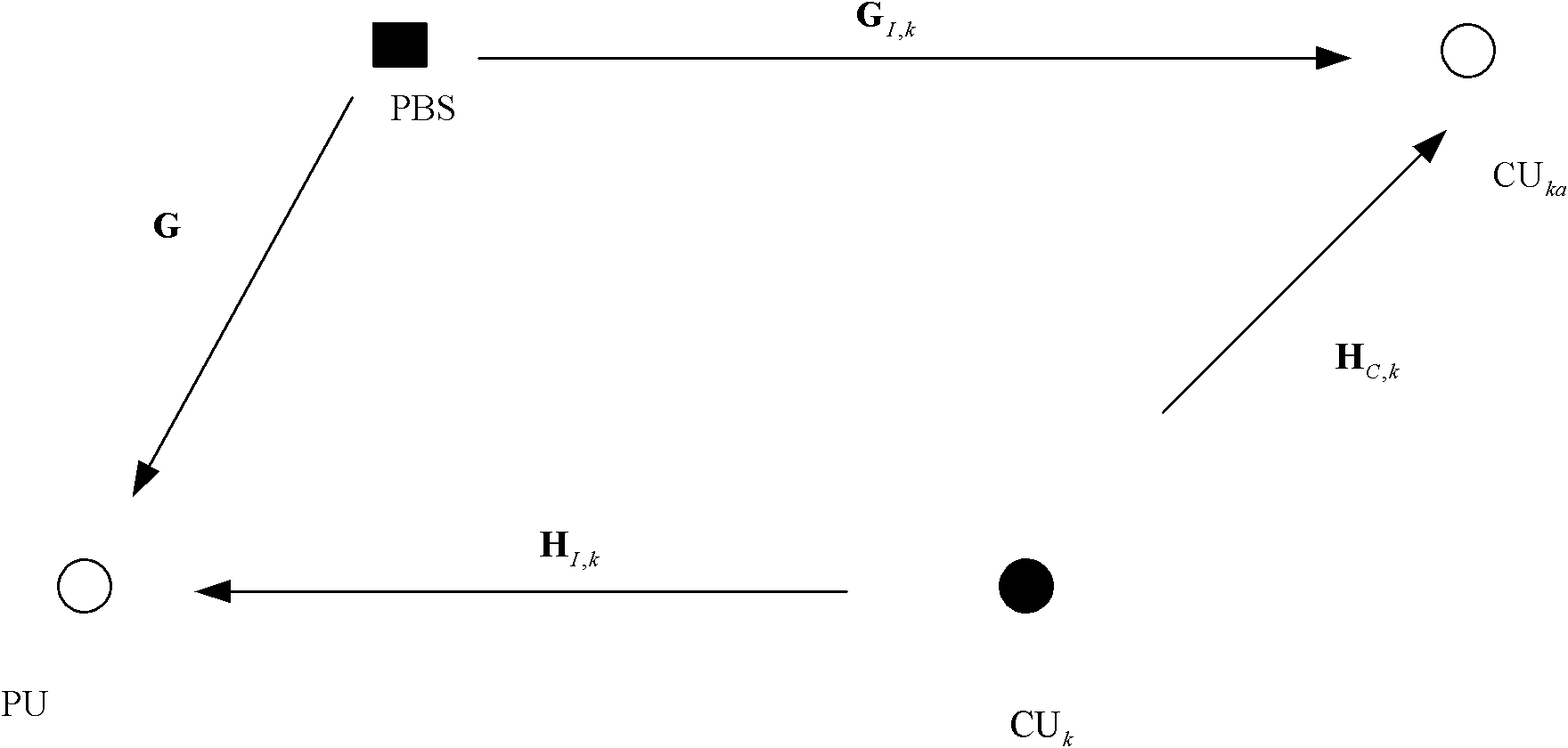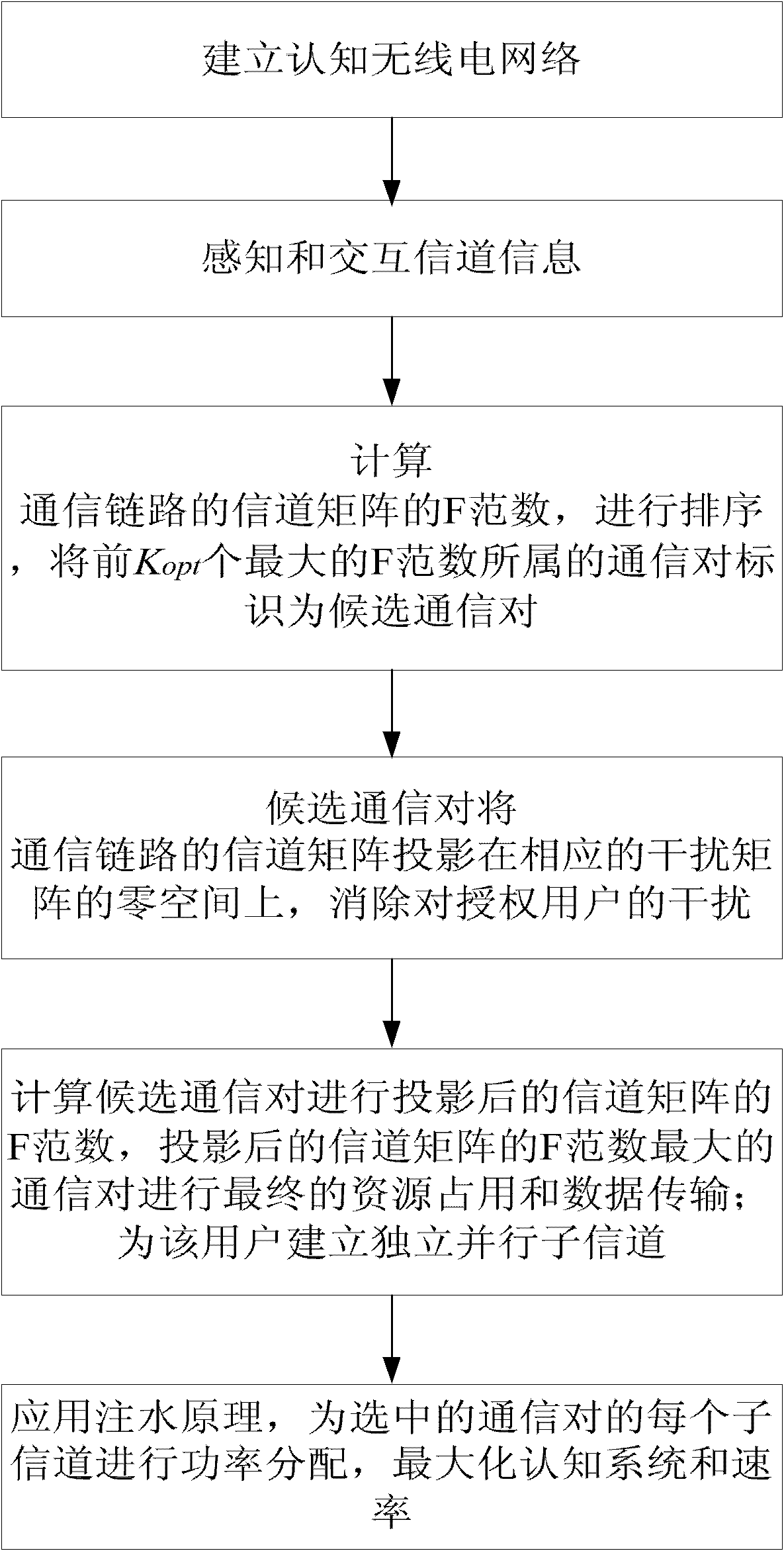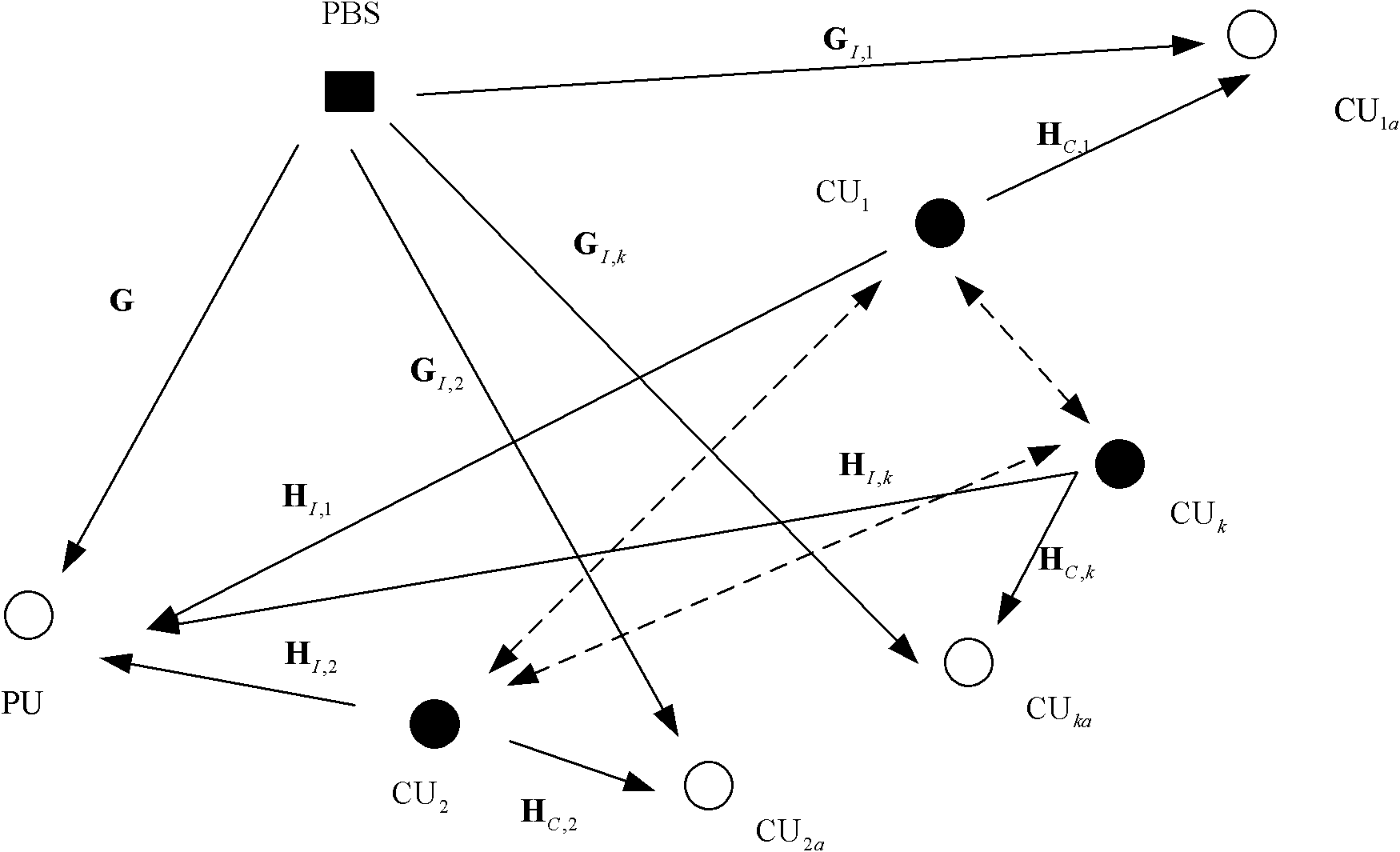Resource allocation method for cognitive system based on space multiplexing
A cognitive system and resource allocation technology, applied in the field of wireless communication, can solve problems such as cognitive network capacity loss and failure to obtain multi-user diversity of cognitive network, so as to simplify user selection methods, increase computational complexity, and reduce effect of complexity
- Summary
- Abstract
- Description
- Claims
- Application Information
AI Technical Summary
Problems solved by technology
Method used
Image
Examples
Embodiment Construction
[0049] The present invention will be described in detail below in conjunction with the accompanying drawings and specific embodiments.
[0050] First, attach image 3 The network structure diagram of the specific implementation is given in , where the main system is a centralized system, and the number of authorized users is K p , each user has N p Antennas, the number of cognitive user pairs is K c , and constitutes K c Cognitive communication pairs, each communication pair has two secondary users: CU k and CU ka , where CU k For the transmitting node, CU ka is the receiving node, and each user has N c root antenna, and the number of licensed base station (PBS) antennas is M. Here it is assumed that N c ≥N p +1. Assume that there is only one authorized user accessing a certain frequency band at a certain moment, that is, image 3 For the PU shown in , the case of multiple authorized users accessing can be extended accordingly. attached image 3 There are three t...
PUM
 Login to View More
Login to View More Abstract
Description
Claims
Application Information
 Login to View More
Login to View More - R&D
- Intellectual Property
- Life Sciences
- Materials
- Tech Scout
- Unparalleled Data Quality
- Higher Quality Content
- 60% Fewer Hallucinations
Browse by: Latest US Patents, China's latest patents, Technical Efficacy Thesaurus, Application Domain, Technology Topic, Popular Technical Reports.
© 2025 PatSnap. All rights reserved.Legal|Privacy policy|Modern Slavery Act Transparency Statement|Sitemap|About US| Contact US: help@patsnap.com



